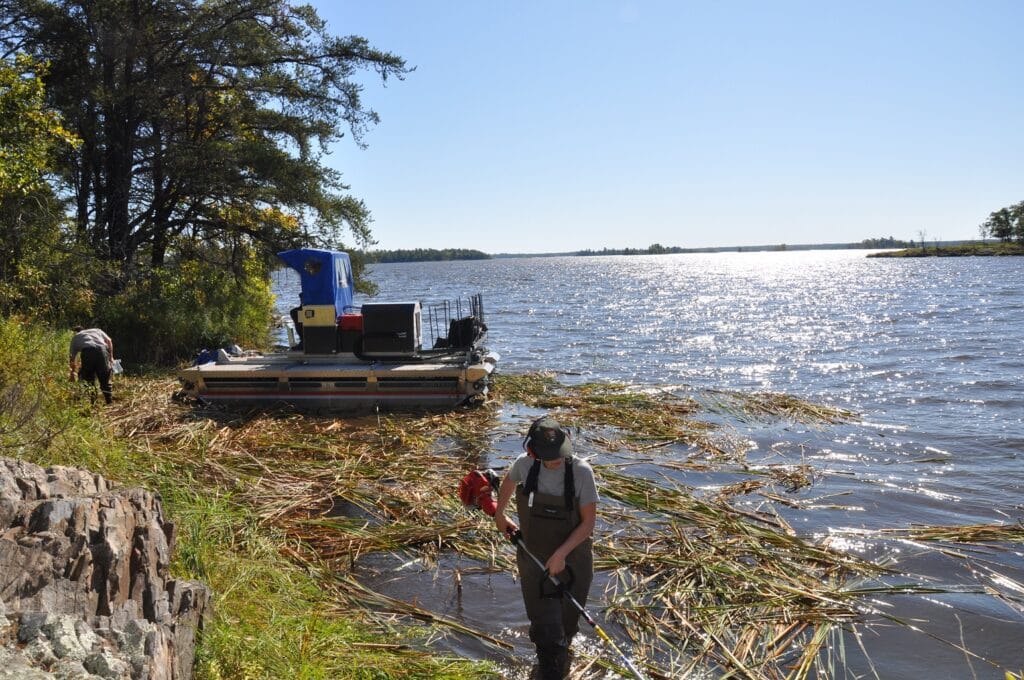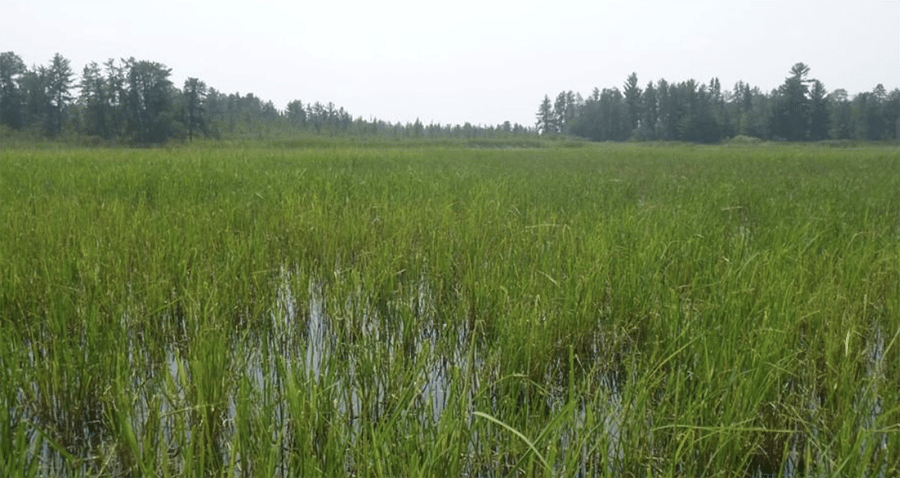
This summer, National Park Service workers have been busy addressing a major ecological threat to Voyageurs National Park: cattails. While there are native species of cattails that provide many benefits for water and wildlife, the hybrid invasive cattails in question form dense, homogeneous mats that create nearly sterile environments.
“When it gets rooted somewhere, it really takes over, and they create these vast swaths of just cattail and cattail only — and it’s very thick,” Reid Plumb, a wildlife biologist with the National Park Service, told MPR News. “And it doesn’t really create good habitat for anything at that point.”
Nonnative cattails are blamed for crowding out important native species like wild rice, or manoomin, wetland sedges, and muskrats. They also reduce the habitat quality for birds, insects, amphibians, and other wildlife.
Beginning with studies of the issue in recent years, and then receiving funds from Minnesota’s 2008 Legacy Amendment, the National Park is attempting to eliminate about 500 acres of the undesirable plant. Last fiscal year, the state of Minnesota provided a $1.2 million grant for the work through the Outdoor Heritage Fund.
Cutting cattails
The crews are using a specialized watercraft and hand tools to cut and grind up the non-native plants. No herbicides are used because of the nearly pristine and protected nature of the National Park’s lakes. A MobiCraft machine, an amphibious vehicle, is a primary tool for mowing and grinding up cattails.
The work began in 2017, after the release of an Environmental Assessment. It includes mechanical work, hand cutting, and prescribed fire. After the non-native plants are removed, areas are planted with local seeds and monitored for the return of a more diverse wetland.
The management efforts are partly addressing a challenge created by human actions. The non-native hybrid cattails can survive in deeper water, and all cattails thrive when depth variability is reduced. Because the lake levels in Rainy and Namakan Lakes are managed by the International Joint Commission through regulating dam flows, scientists believe it has created an ideal environment for non-native cattails to thrive over the past century.
Not all cattails are being removed from the park. While most cattails have some non-native DNA and exhibit the ability to create monocultures, park staff are careful to retain enough cattails to provide habitat and ecological benefits.
UPDATE:
Via @voyageursnps “New wild rice plants are growing in areas where floating cattail mats had once dominated. Thanks to the restoration efforts of wetland staff, we estimate that about 7 acres of wild rice have been restored in the Reuter Creek drainage. Wild rice is an ecologically and culturally significant wetland plant that is highly susceptible of being outcompeted by hybrid cattails.”


More information:
- Crews work to remove islands of invasive cattails in Voyageurs National Park – MPR News
- Cattails – Voyageurs National Park
- Not All Cattails are Created Equal: Typha x glauca the Silent Invader – Voyageurs National Park Association
- Management of Non-Native Hybrid Cattails – National Park Service Planning

